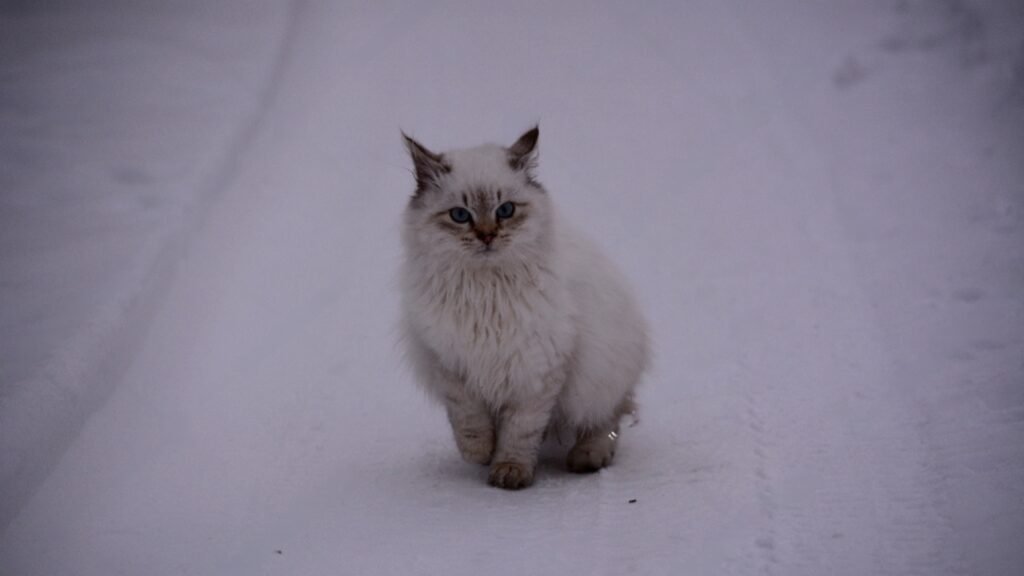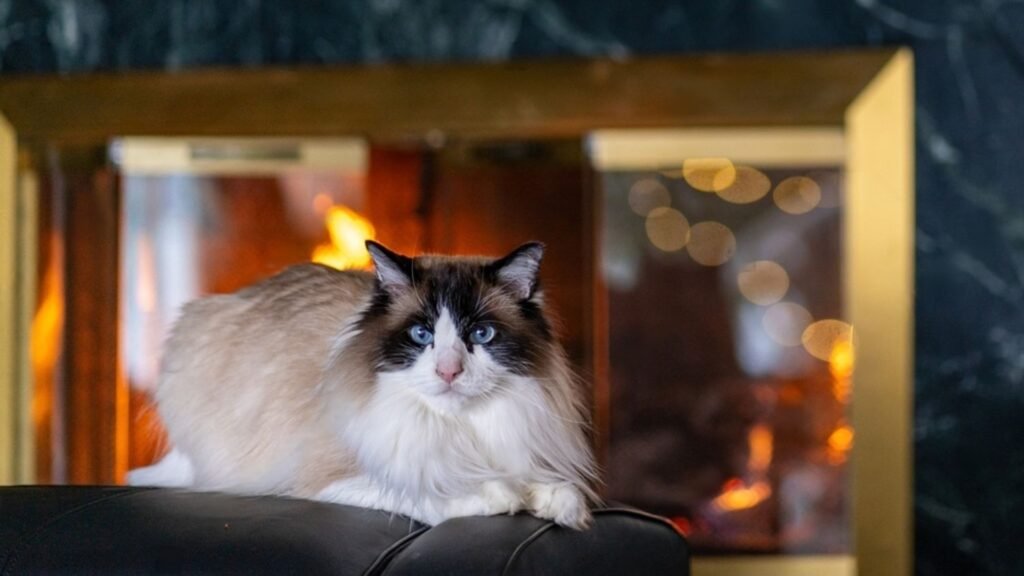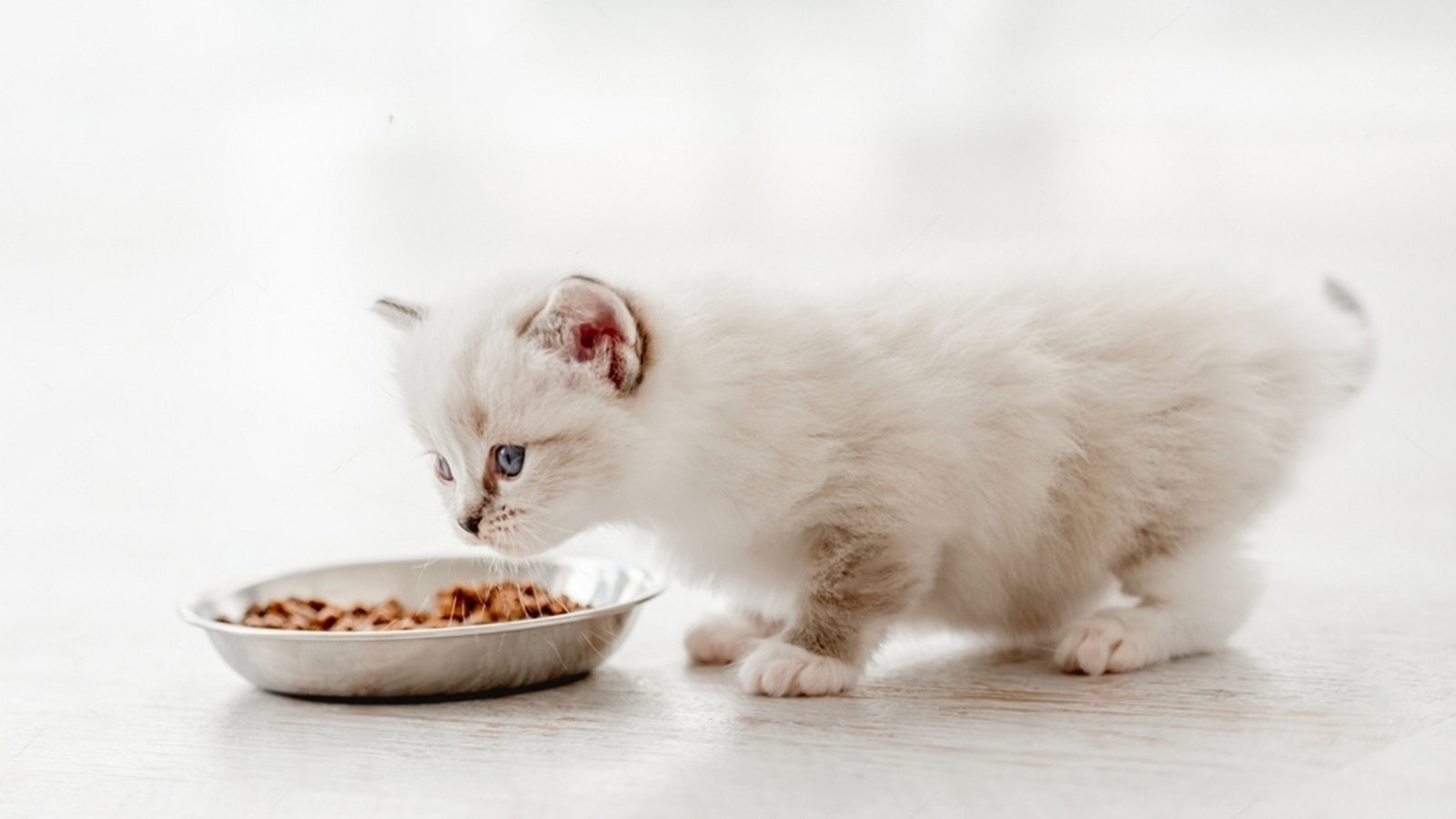Ragdolls don’t have dense undercoats, though they do have long fur that helps them cope with colder weather to some extent, unlike cats with short hair or no hairs (Sphynx cat). The normal body temperature of ragdoll cats is between 100.5 F and 102.5 F, higher than that of humans (99F to 99F).
Prolonged exposure to cold conditions, especially below 45F or at the very least below 32F can get them early hypothermia. It’s safe to say that ragdoll cats can get cold and it’s better not to let them go outside on their own if the weather conditions are extreme.
We’ll share how cold is too cold for ragdoll kittens, what signs to watch out for when your ragdoll cat is feeling too cold, and how to maintain threshold temperatures to keep them warm throughout the winter.
Related Read: Ragdoll cat care guide for first-time owners
How Cold Is Too Cold For Ragdoll Kittens?

Ragdoll kittens and senior ragdolls are more subtle to declining temperature than healthy adults or humans. Kitten ragdolls and senior cats, especially those with health diseases like arthritis may lose heat faster and can’t tolerate temperatures below 50 F.
Black ragdoll cats might fare better in the mild cold since the black fur would absorb heat from the sun far better than white or other lighter colors though. No ragdoll breed coat color fully offsets prolonged exposure. Traditional Ragdolls and those with a slightly thicker coat, like mink Ragdoll kittens, still can’t tolerate cold temperatures hovering below 50 or 45°F.
How Can I Tell That My Ragdoll Cat Is Cold?

Ragdolls are mainly indoor cats who like to go limp when you pick them up and yep sensitive to cold weather. If you take them outside in snowy or chilly conditions, or if there isn’t sufficient insulation in your home when it’s too cold, there’s a good chance you’ll see them seeking out warm, tight spots, sunny windowsills, begging you to crank up the thermostat, or persistently huddling under blankets or in your warm lap.
Like us, ragdoll cats can get cat flu. Sneezing, runny nose, or watery eyes are the common symptoms of cat flu, which is more of a risk for kitten ragdolls, as they get cold sooner. In worst cases, if your ragdoll gets too cold either by prolonged exposure to cold temperatures or getting wet, frostbite (often on ears or paws) or hypothermia (a condition where body heat drops dangerously low) can escalate quickly.
Hypothermia Symptoms
- Severe shivering
- Lethargy
- Very pale gums
- Cold extremities (ears, limbs)
- Weak pulse and/or heartbeat
- Difficulty breathing
- Loss of coordination & balance
In such a scenario act straight away, dry them off if they’re wet, wrap them in warm towels, and take them to your trusted vet.
How To Warm Up Your Ragdoll Cat In Cold Weather

When it’s cold outside, even indoors can get very chilly for your Ragdoll cat. If you leave them alone during the average workday without proper heating arrangements, the risk of getting a cold becomes very severe. A cozy heated bed, blankets, or hot water bottles (wrapped safely in towels to prevent burns) can help warm them up.
Cold weather means your ragdoll kitty burns calories faster than usual to stay warm. Feed them slightly more during winter, and keep their activity level up with interactive play sessions. Since ragdolls are people-oriented, they’d happily chase you, curl up next to you, or play fetch.
We recommend daily play sessions to maintain warmth and bonding. Although, they’re low-energy cats, doesn’t seem to play on their own or meow off and on though. If you notice they’re shivering, constantly sneezing, or if their energy level seems toned down it’s worrisome.
Arthritic or elderly Ragdolls suffer in cold weather more acutely, as stiff joints worsen. Ensure their sleep in areas are warm and very cushioned. These cats are vulnerable, so keep them supervised around heating sources. Periodically wash bedding, maintain humidity level to control shedding, and keep up good hygiene at home to prevent skin issues from dry indoor heat.
Are Ragdoll Cats Sensitive To Cold Weather (FAQs)
Why shouldn’t Ragdoll cats go outside?
Unlike more independent big-size breeds like Maine Coon or Norwegian Forest Cat, Ragdolls aren’t “street smart” and lack survival instincts to navigate outdoor dangers. They’re overly friendly and win trust easily making them vulnerable to traffic, predators (feral cats, dogs), and even theft. It’s safe to say that Ragdoll cats are better off inside, whether outside is hot or chilly.
Can Ragdoll cats survive the cold?
Ragdoll cats do tolerate moderate cold to some extent because of their cold-resistant semi-long haired coat. If the temperature is freezing or below 45 F, it’s unsafe to take them out for prolonged periods, especially for kitten ragdolls, senior cats, or those with health issues.
Do Ragdolls get cold inside the house at night?
Ragdolls can feel chilly indoors during colder days and nights, particularly in drafty areas. Their lack of undercoat makes them more sensitive to temperature drops than hardier breeds. If there is chilly cold outside, provide them with extra cozy bedding, a pile of blankets, or place their sleeping area near heat sources (Though, never leave the heat source unattended).
Wrapping Up…
Ragdoll cats are a healthy and resilient breed though they’re sensitive to cold temperatures especially if they drop below 45 F or 32 F. If you do take them out in cooler weather, be cautious and don’t let them get entangled in outdoor hazards. Hopefully, you now have a better understanding of the cold tolerance levels for your ragdoll kittens and cats, warning signs to watch out for when they’re feeling cold, and ways to help keep them warm in the winter.
Written By: Usman Malik | Reviewed By: Ali Abbas | Fact Checked By: Aqib Zulfiqar








